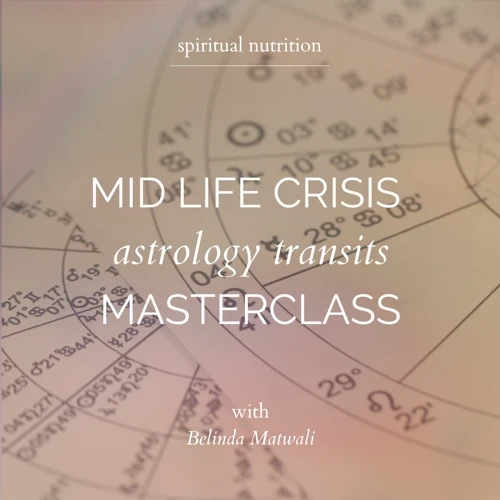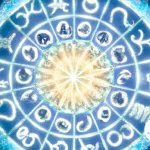Astrology has long been regarded as a powerful tool for self-discovery and personal growth. But did you know that it can also aid in healing past traumas? The connection between astrology and trauma may not be immediately apparent, but delve into the depths of the birth chart, examine the movement of the planets, and embrace self-care practices aligned with astrology, and you’ll find a roadmap to navigating and healing past traumas that is both profound and empowering. In this article, we’ll explore the various types and effects of trauma, the healing process, and how astrology can play a transformative role. So, fasten your seatbelt, open your mind, and get ready to uncover the hidden wisdom of the cosmos on your journey towards healing and wholeness.
Understanding Trauma
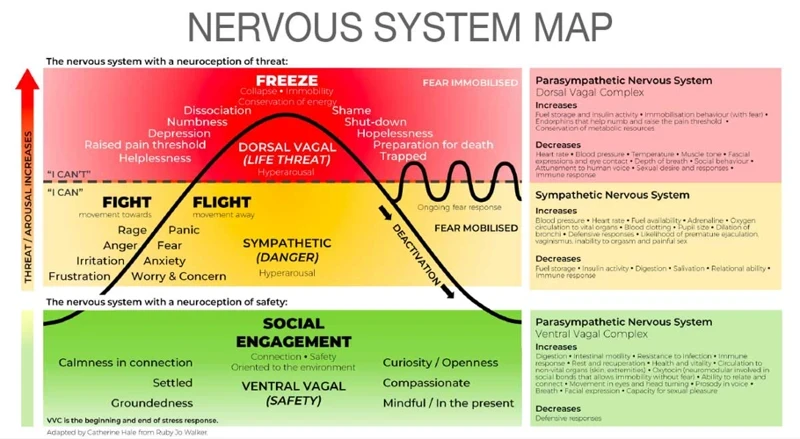
1. Types of Trauma:
Trauma can take many forms and can result from a wide range of experiences. Some common types include:
– Physical trauma: This involves bodily harm, such as accidents, injuries, or physical abuse.
– Emotional trauma: This type of trauma typically stems from emotionally distressing events, such as the death of a loved one, relationship breakups, or witnessing a traumatic incident.
– Psychological trauma: Psychological trauma is often caused by experiences that deeply affect a person’s mental well-being, such as severe bullying, childhood neglect, or the aftermath of a natural disaster.
– Relational trauma: This occurs when the trauma is connected to relationships, such as experiencing domestic violence or betrayal from a trusted individual.
2. Effects of Trauma:
The effects of trauma can be far-reaching and impact various aspects of a person’s life. Some common effects include:
– Emotional distress: Trauma can lead to intense feelings of fear, anxiety, depression, guilt, or shame.
– Physical symptoms: Traumatic experiences can manifest as physical symptoms like headaches, body aches, fatigue, or insomnia.
– Relationship difficulties: Trauma can affect a person’s ability to trust, form healthy attachments, and maintain stable relationships.
– Self-esteem issues: Trauma may undermine a person’s self-esteem and lead to negative self-perceptions and beliefs.
– Behavioral changes: Trauma can result in changes in behavior, such as withdrawal, aggression, substance abuse, or self-destructive tendencies.
3. The Healing Process:
Healing from trauma is a complex and individualized journey. It involves acknowledging and processing the trauma, gaining insight and understanding, and developing coping mechanisms. The healing process often includes therapy, support from loved ones, and engaging in self-care practices. It’s important to note that healing is not linear and may require patience and perseverance.
Understanding the various types of trauma, their effects, and the process of healing is essential for embarking on a journey of healing and growth. Astrology can complement this process by providing unique insights and tools for navigating and healing past traumas.
1. Types of Trauma
When it comes to trauma, there are various types that individuals may experience. Understanding these different types can help us better comprehend the effects they can have on a person’s well-being:
– Physical Trauma: Physical trauma involves any bodily harm or injury caused by accidents, violence, or abuse. This could encompass incidents such as car accidents, physical assault, or medical procedures.
– Emotional Trauma: Emotional trauma refers to experiences that result in lasting emotional distress. Examples include the sudden death of a loved one, witnessing a traumatic event, or enduring the end of a significant relationship.
– Psychological Trauma: Psychological trauma occurs when an individual’s mental well-being is deeply affected by distressing experiences. This might include childhood neglect, sexual abuse, or surviving a natural disaster.
– Relational Trauma: Relational trauma involves traumatic experiences within relationships. This may include domestic violence, betrayal by a trusted individual, or repeated emotional manipulation.
It’s important to note that these types of trauma can often overlap or coexist within an individual’s life. Recognizing the type(s) of trauma someone has experienced is a crucial step in the healing process, as it allows for appropriate strategies to be implemented to support their recovery.
2. Effects of Trauma
The effects of trauma can be vast and profound, impacting multiple aspects of a person’s life. It is crucial to understand these effects in order to navigate through the healing process effectively. Here are some common effects of trauma:
1. Emotional Distress: Trauma often triggers intense and overwhelming emotional responses. Individuals may experience a range of emotions, including fear, anxiety, anger, sadness, guilt, or shame. These emotions can be persistent and interfere with daily functioning and overall well-being.
2. Physical Symptoms: Trauma can manifest in physical symptoms as well. Headaches, body aches, fatigue, insomnia, gastrointestinal issues, and compromised immune function are some examples. These physical symptoms arise as a result of the physiological stress response triggered by the traumatic experience.
3. Relationship Difficulties: Trauma can severely impact an individual’s ability to form and maintain healthy relationships. Trust issues, difficulty with intimacy, fear of abandonment, or emotional detachment are common challenges faced by trauma survivors. Interpersonal connections may become strained or unstable as a result.
4. Self-esteem Issues: Trauma often has a detrimental effect on an individual’s self-esteem and self-worth. Survivors may develop negative beliefs about themselves, feeling undeserving of love, happiness, or success. Low self-esteem can hinder personal growth and cause a persistent sense of inadequacy.
5. Behavioral Changes: Traumatic experiences can lead to significant changes in behavior. Some individuals may experience hyperarousal, displaying signs of irritability, aggression, or hypervigilance. Others may resort to avoidance and withdrawal, isolating themselves from social activities or relationships. Substance abuse or engaging in self-destructive behaviors can also be coping mechanisms that arise from trauma.
Understanding the effects of trauma is essential in order to address and heal from its impact. By seeking professional support, engaging in self-care practices, and utilizing tools like astrology, individuals can navigate their healing journey with increased awareness and resilience. Remember, healing is possible, and there is support available to help overcome the effects of trauma.
3. The Healing Process
3. The Healing Process:
The healing process for trauma is unique to each individual, as everyone’s experiences and needs are different. However, there are some general steps that can be taken to facilitate healing and recovery:
– Recognizing and acknowledging the trauma: The first step in the healing process is acknowledging the presence of trauma and recognizing its impact on your life. This requires honest self-reflection and a willingness to confront painful emotions and memories.
– Seeking support: Healing from trauma often requires support from others. This can include reaching out to trusted friends or family members, joining support groups, or seeking professional help from therapists or counselors who specialize in trauma work. They can provide guidance, validation, and tools for healing.
– Engaging in therapy: Therapy is an integral part of the healing process, as it offers a safe space to explore and process the trauma. Different therapeutic modalities, such as cognitive-behavioral therapy (CBT), eye movement desensitization and reprocessing (EMDR), or somatic experiencing, can be utilized based on individual needs. Therapists can help develop coping strategies, address negative thought patterns, and facilitate healing on a deep emotional level.
– Developing self-care practices: Self-care plays a crucial role in the healing process. This involves prioritizing activities that promote physical, emotional, and spiritual well-being. This can include practices like yoga, meditation, engaging in hobbies, spending time in nature, or seeking out creative outlets.
– Practicing mindfulness: Mindfulness can help individuals stay present and grounded, allowing them to observe their thoughts and emotions without judgment. Mindfulness techniques, such as deep breathing exercises or meditation, can be incorporated into daily routines to reduce anxiety and increase overall well-being.
– Gradual exposure to triggers: Healing from trauma often involves gradually exposing oneself to triggers or reminders of the traumatic event in a safe and controlled manner. This process, known as exposure therapy, helps to desensitize the individual to the traumatic memories and reduces their emotional response over time.
– Building resilience and self-compassion: Healing from trauma is a journey that requires resilience and self-compassion. Recognizing your own strength, celebrating small victories, and practicing self-forgiveness are important components of the healing process.
Remember, the healing process takes time and patience. It is essential to be gentle with yourself and seek support when needed. With dedication and a holistic approach, it is possible to navigate and heal past traumas, allowing for growth, resilience, and a brighter future.
How Astrology Can Help
1. Identifying Trauma Indicators in the Birth Chart:
Astrology can help in identifying trauma indicators in a person’s birth chart, which is a snapshot of the celestial positions at the moment of their birth. Certain planetary aspects and placements can shed light on past traumas and their effects on an individual’s psychological and emotional well-being. For example, a challenging aspect between Mars and Saturn may suggest experiences of violence or abuse, while a prominent Neptune in the chart may indicate a tendency to repress or escape from traumatic memories. Exploring these indicators with the help of a professional astrologer can provide valuable insights into the root causes of trauma and guide the healing process.
2. Healing Through Planetary Transits:
Planetary transits, which refer to the movement of planets through the zodiac, play a significant role in astrology-based healing. Transits can activate certain aspects of a person’s birth chart and bring to the surface unresolved traumas for healing and integration. For instance, when Saturn, the planet of structure and responsibility, makes a challenging aspect to a sensitive point in the birth chart, it may trigger a period of intense healing and reflection. By understanding these transits and their potential influence, individuals can navigate through their traumas and utilize them as opportunities for growth and healing.
Astrology offers a unique framework for understanding and addressing past traumas. By identifying trauma indicators in the birth chart and working with the energies of planetary transits, individuals can gain deeper insights into their personal history and use this knowledge as a catalyst for healing and transformation. Solidifying the connection between astrology and trauma can provide a powerful tool for those seeking to navigate their healing journeys.
1. Identifying Trauma Indicators in the Birth Chart
Identifying trauma indicators in the birth chart is a significant step in using astrology to navigate and heal past traumas. The birth chart, also known as the natal chart, is a snapshot of the positions of the planets at the exact moment of an individual’s birth. By analyzing the birth chart, astrologers can gain insights into an individual’s personality, strengths, weaknesses, and potential challenges, including trauma. Here are some key indicators to look for in the birth chart:
1. Challenged Planets: Planets that are heavily afflicted or in challenging aspects may indicate areas of trauma in an individual’s life. For example, a heavily afflicted Mars could suggest experiences of physical trauma or conflict, while a challenging Moon may indicate emotional trauma.
2. Placement of Chiron: Chiron, known as the “wounded healer” in astrology, represents the deepest wounds and potential for healing. Its placement and aspects in the birth chart can offer insights into past traumas and the potential for transformative healing.
3. Powerful Aspects: Certain aspects between planets, such as conjunctions, squares, and oppositions, can indicate areas of intensity or struggle. Pay attention to these aspects as they may point to past traumatic experiences that need healing and resolution.
4. Retrograde Planets: Retrograde planets in the birth chart may suggest areas of unresolved issues or past-life trauma. These planets may require extra attention and healing work to address deeply ingrained patterns and wounds.
It’s essential to consult with a professional astrologer for an in-depth analysis of your birth chart to accurately identify trauma indicators and interpret their significance. Understanding the astrological indicators of trauma can provide valuable insights and serve as a guide for healing and transformation on your journey towards wholeness.
2. Healing Through Planetary Transits
2. Healing Through Planetary Transits:
Astrology teaches us that the movement of planets in the sky can have a profound impact on our lives. When it comes to healing from past traumas, understanding and working with planetary transits can be particularly helpful. Planetary transits refer to the movement of planets as they make aspects to our natal charts. These transits can activate specific areas of our chart that are connected to trauma or healing.
During challenging transits, such as a Saturn square to our natal Moon or a Pluto conjunction to our natal Saturn, we may feel the effects of past traumas resurfacing. This can be an opportunity for deep healing and transformation, although it may also bring up difficult emotions and memories.
On the other hand, supportive transits, such as a Jupiter trine to our natal Venus or a Neptune sextile to our natal Sun, can offer healing and gentle support during the healing process. They can bring opportunities for emotional healing, spiritual growth, and a renewed sense of hope and purpose.
To work with planetary transits for healing, it’s important to first identify the transits that are currently active in your birth chart. You can consult with a professional astrologer who specializes in trauma and healing to gain insights and guidance. They can help you understand how these transits are impacting your life and how to navigate them in a way that supports your healing journey.
Once you are aware of the specific transits, you can consciously work with their energies. This may involve journaling, self-reflection, meditation, or engaging in therapeutic practices that align with the themes of the transits. For example, during a Pluto transit, focusing on deep shadow work and releasing past traumas may be beneficial.
Remember, the purpose of working with planetary transits for healing is not to dwell on past traumas but to use the energies present in the cosmos to facilitate growth, healing, and transformation. It’s about harnessing the supportive energies and navigating the challenging ones with awareness and intention. So, embrace the power of planetary transits as a tool for healing and allow the wisdom of the stars to guide you on your journey toward wholeness. (source)
Practical Steps to Using Astrology for Healing

1. Seek Professional Guidance:
To effectively use astrology for healing traumas, it is recommended to seek guidance from a professional astrologer who specializes in trauma or psychological astrology. These experts can analyze your birth chart, identify key trauma indicators, and provide valuable insights and guidance tailored to your specific experiences. Their expertise can help you navigate the complexities of astrology and trauma, ensuring a more profound and targeted healing journey.
Link: compatibility-fixed-signs-relationships
2. Journaling and Self-reflection:
Keeping a journal and engaging in self-reflection can be powerful tools for healing with astrology. Take time each day to write about your experiences, emotions, and thoughts. Reflect on how certain astrological aspects may relate to your traumas and the healing process. Pay attention to patterns and themes that emerge, as these insights can guide your healing journey. Journaling also provides a safe space for processing emotions and gaining clarity.
3. Setting Intentions and Affirmations:
Setting intentions and affirmations can assist in using astrology for healing. Evaluate the areas of your life impacted by trauma and set positive intentions for healing and growth. Use affirmations related to the astrological aspects you want to work on. For example, if your birth chart indicates difficulties in self-expression, affirmations like “I confidently express my authentic self” can help rewire your subconscious mind and promote healing in that area.
4. Engaging in Therapeutic Rituals:
Create therapeutic rituals aligned with astrology to promote healing. This could include rituals associated with planetary movements, moon phases, or specific astrological aspects. For example, during a full moon, you might perform a releasing ritual to let go of past traumas. Incorporate symbols, crystals, meditation, or any practices that resonate with you personally while considering the astrological energies at play. These rituals can help ground your healing intentions and foster a sense of empowerment.
Link: gemini-money-financial-habits-tips
By implementing these practical steps, you can harness the power of astrology to navigate and heal past traumas. Remember, everyone’s healing journey is unique, so adapt these steps to suit your needs and preferences. Stay open-minded, embrace the transformative energies of astrology, and allow it to guide you towards a path of healing and wholeness.
1. Seek Professional Guidance
Seeking professional guidance is crucial when navigating and healing past traumas. A trained therapist or counselor can provide the necessary support and guidance to help you process your experiences and develop healthy coping mechanisms. Here are a few reasons why professional guidance is important in the healing process:
1. Expertise: Mental health professionals have the knowledge and expertise to understand the complexities of trauma and its impact on your life. They can offer evidence-based techniques and interventions tailored to your needs, ensuring that you receive the most effective treatment.
2. Safe and Non-judgmental Space: Therapy provides a safe and non-judgmental space where you can freely express your thoughts, feelings, and experiences. A therapist creates a supportive environment where you can explore your trauma without fear of criticism or invalidation.
3. Trauma-Informed Approaches: Professionals skilled in trauma therapy utilize trauma-informed approaches that take into account the unique challenges and sensitivities associated with trauma. They understand the importance of safety, trust, and empowerment throughout the healing process.
4. Tools and Coping Strategies: Therapists can equip you with a variety of tools and coping strategies to help manage the symptoms and triggers of trauma. They may teach relaxation techniques, resilience-building exercises, and communication skills, empowering you to navigate difficult emotions and situations.
5. Customized Treatment Plans: Each individual’s experience of trauma is unique, and it requires a tailored treatment plan. A professional will assess your specific needs and create a personalized approach to address your trauma, taking into account your strengths, vulnerabilities, and goals.
Remember, seeking professional guidance is not a sign of weakness but rather a sign of strength and courage. It acknowledges that you are taking an active role in your healing journey. A therapist or counselor can provide the necessary support, guidance, and tools to navigate the complexities of trauma and ultimately facilitate your healing process.
2. Journaling and Self-reflection
Journaling and self-reflection are powerful practices that can aid in the healing of past traumas. By creating a safe space for self-expression and introspection, journaling allows individuals to confront their emotions, thoughts, and experiences head-on. Here’s how you can incorporate journaling and self-reflection into your healing journey:
1. Start a trauma-focused journal: Designate a journal specifically for exploring your past traumas. This will create a dedicated space where you can freely express your feelings and experiences related to your trauma.
2. Write without judgment: When journaling, allow your thoughts and emotions to flow without censoring or judging yourself. Embrace vulnerability and honesty as you explore your trauma.
3. Reflect on triggers and patterns: Pay attention to triggers that arise in your daily life and how they may be connected to your past trauma. Journaling about these triggers can help you identify patterns and gain a deeper understanding of how your trauma continues to impact you.
4. Explore emotions and beliefs: Use your journal to delve into the emotions you experience as a result of your trauma. Write about your fears, anger, sadness, or any other emotions that come up. Additionally, challenge any negative beliefs that may have developed due to the trauma by writing counterarguments or positive affirmations.
5. Track progress and milestones: Journaling allows you to track your healing progress. Take note of any milestones, breakthroughs, or positive changes you observe along the way. This can serve as a reminder of your resilience and growth.
6. Seek support and guidance: Consider working with a therapist or counselor who specializes in trauma to guide you through your journaling process. Their expertise can provide valuable insights and support as you navigate your healing journey.
Remember, journaling is a personal and individual practice. Tailor it to suit your needs and preferences. It can be a powerful tool for self-discovery, healing, and creating a pathway to resilience and wholeness.
3. Setting Intentions and Affirmations
Setting intentions and affirmations is a powerful practice that can assist in the healing process. By consciously directing our thoughts and energy, we can rewire our subconscious mind and create positive change. Here are some steps to effectively set intentions and affirmations for healing:
1. Reflect on Your Trauma: Take time to understand the specific areas of your life that have been impacted by trauma. What thoughts, beliefs, or patterns are keeping you stuck? Reflecting on these areas will help you identify the intentions you want to set.
2. Choose Empowering Affirmations: Affirmations are positive statements that reinforce desired beliefs and outcomes. Select affirmations that directly address the negative beliefs associated with your trauma. For example, if you struggle with self-worth, you might affirm, “I am worthy of love and respect.”
3. Write Down Your Intentions and Affirmations: Writing down your intentions and affirmations brings them into tangible form and allows them to take on more power. Use a journal or a piece of paper to record your intentions and affirmations. Be specific, concise, and use positive language.
4. Repeat Daily: Consistency is key when it comes to setting intentions and affirmations. Set aside dedicated time each day to repeat your intentions and affirmations. It could be in the morning, before bed, or during a quiet moment of the day. Say them out loud with conviction and believe in their truth.
5. Visualize and Feel: As you repeat your intentions and affirmations, visualize yourself embodying the desired state of healing. Imagine yourself free from the grip of trauma, experiencing joy, peace, and self-compassion. Feel the emotions associated with this vision as strongly as possible, as if it has already manifested.
6. Take Action: Intentions and affirmations alone are not enough; they must be supported by action. Take proactive steps towards healing, such as seeking therapy, practicing self-care, or engaging in healing modalities. Align your actions with your intentions, reinforcing your belief in the healing process.
By setting intentions and affirmations, you are actively programming your mind and aligning your energy with healing and growth. Embrace this practice as a daily ritual, and watch as it helps you navigate and heal past traumas, empowering you to create a positive and fulfilling future.
4. Engaging in Therapeutic Rituals
Engaging in therapeutic rituals can be a powerful way to honor and heal past traumas. These rituals provide a sacred space for introspection, release, and transformation. Here are some practices you can incorporate into your healing journey:
1. Creating a Safe Space: Set a designated area in your home where you can engage in therapeutic rituals. Make it a space that feels calming and comforting, with items that hold personal significance or bring a sense of peace.
2. Setting Intentions: Before beginning a ritual, set clear intentions for what you hope to release, heal, or invite into your life. Focus on positive affirmations and visualize the positive transformation you seek.
3. Breathwork and Meditation: Incorporate deep breathing exercises or guided meditation into your ritual. This can help calm the mind, relax the body, and create a centered sense of awareness. Practice mindfulness and allow yourself to fully experience any emotions that arise.
4. Journaling: Use a journal to explore your thoughts, feelings, and memories related to the trauma. Write without judgment and allow your emotions to flow freely. This can provide valuable insights and facilitate the healing process.
5. Ritual of Release: Create a symbolic act of releasing the pain or negative energy associated with the trauma. You can write down your fears, regrets, or painful memories on a piece of paper and burn it, bury it in the earth, or release it into a flowing body of water. As you do so, visualize the weight of the trauma being lifted from your shoulders.
6. Cleansing Rituals: Engage in rituals that involve cleansing and purifying the energy of your space and yourself. This can include smudging with sage or other cleansing herbs, taking a ritual bath, or using sound therapy with bells or singing bowls.
7. Meditative Movement: Explore gentle movements such as yoga, qigong, or tai chi as a way to connect your body, mind, and spirit. These practices can help release tension, promote relaxation, and cultivate a sense of inner peace.
Remember, therapeutic rituals are personal to each individual, so feel free to customize them to suit your needs and preferences. Trust your intuition and be gentle with yourself as you navigate your healing journey.
The Role of Self-care in the Healing Journey
1. Nurturing Yourself Based on Your Moon Sign:
In astrology, the Moon sign represents our emotional well-being and inner needs. Understanding and nurturing these needs can be a powerful aspect of self-care during the healing journey. For example, if your Moon sign is in Aries, you may benefit from activities that allow you to assert your individuality and independence, such as engaging in physical exercise or pursuing personal goals. On the other hand, if your Moon sign is in Cancer, you might find solace in creating a cozy and nurturing home environment, spending time with loved ones, or engaging in activities that evoke a sense of emotional security and comfort.
2. Embracing the Power of Crystal Healing:
Crystals have long been used for their healing properties and can play a significant role in self-care during the healing journey. Each crystal has unique energies that can support specific emotional and energetic needs. For instance, amethyst is often associated with calming and soothing energies, making it a great choice for those healing from trauma. Rose quartz, known as the “stone of unconditional love,” can assist in nurturing self-love and compassion. By incorporating crystals into your self-care routine, such as carrying them with you, meditating with them, or creating crystal grids, you can harness their supportive energies and enhance your healing process.
3. Exploring Energy Healing Modalities:
Energy healing modalities, such as Reiki, acupuncture, or sound healing, can be valuable tools for self-care during the healing journey. These practices work on balancing and clearing the energetic body, addressing any blockages or imbalances that may exist due to past traumas. Receiving regular energy healing sessions can help release stagnant energy, promote relaxation and emotional well-being, and support overall healing. Additionally, practicing mindfulness, meditation, or breathwork can also help cultivate a sense of inner peace, reduce stress, and create a space for healing and self-discovery.
By incorporating self-care practices aligned with astrology into your healing journey, you can create a nurturing and supportive environment for yourself. Remember that self-care is not a luxury but a vital component of healing. Taking the time to nurture and care for yourself can not only aid in healing past traumas but also promote overall well-being and personal growth.
1. Nurturing Yourself Based on Your Moon Sign
1. Nurturing Yourself Based on Your Moon Sign:
Your Moon sign in astrology represents your emotional needs, inner self, and how you nurture yourself. By understanding and embracing the qualities associated with your Moon sign, you can cultivate a self-care routine that supports your emotional well-being. Here are some nurturing practices based on each Moon sign:
– Aries (bold, energetic): Engage in physical activities that get your adrenaline pumping, such as intense workouts, martial arts, or competitive sports. Take time to assert your independence and pursue personal passions.
– Taurus (sensual, grounded): Surround yourself with comfort and indulge in sensory pleasures. Spend time in nature, savor delicious meals, create a soothing home environment, and prioritize relaxation through activities like massage or aromatherapy.
– Gemini (curious, social): Nourish your mind and intellect by engaging in stimulating conversations, reading diverse books, or learning new skills. Connect with friends and loved ones through social gatherings or virtual meetups.
– Cancer (nurturing, intuitive): Create a safe and cozy space that feels like a sanctuary. Allow yourself to express and process your emotions through journaling, artistic endeavors, or spending quality time with loved ones.
– Leo (confident, expressive): Indulge in activities that boost your self-esteem and allow you to shine, such as performing arts, creative projects, or public speaking. Make time for self-expression and bask in the limelight.
– Virgo (practical, organized): Focus on self-improvement and maintaining a routine that supports your physical and mental well-being. Engage in activities like yoga, meditation, decluttering, or planning and organizing your daily life.
– Libra (harmonious, diplomatic): Surround yourself with beauty and seek balance in all aspects of your life. Engage in activities like art appreciation, music, fashion, or spending quality time connecting with loved ones and cultivating harmonious relationships.
– Scorpio (intense, transformative): Explore your emotional depths and engage in healing practices such as therapy, shadow work, or introspective journaling. Create sacred spaces for contemplation and self-reflection.
– Sagittarius (adventurous, expansive): Nurture yourself through exploration and expansion. Travel, engage in philosophical discussions, pursue higher education, or immerse yourself in different cultures and belief systems.
– Capricorn (ambitious, disciplined): Focus on building a solid foundation for your emotional well-being. Establish routines, set achievable goals, prioritize self-care practices like time management, and find stability in your personal and professional life.
– Aquarius (unique, visionary): Nurturing yourself involves embracing your individuality and engaging in activities that align with your values and ideals. Seek out like-minded communities, participate in humanitarian efforts, or explore innovative technologies and ideas.
– Pisces (imaginative, compassionate): Embrace your intuitive and creative side. Engage in artistic pursuits, connect with your spiritual practices through meditation or prayer, spend time near water, and prioritize self-care rituals to nourish your soul.
Remember, these suggestions are general and can serve as a starting point. The most important aspect is to listen to your own needs and adjust your self-care routine accordingly, taking into account your unique circumstances and preferences. Nurturing yourself based on your Moon sign can contribute to a deeper sense of emotional well-being and self-compassion on your healing journey.
2. Embracing the Power of Crystal Healing
Embracing the Power of Crystal Healing:
Crystal healing has been used for centuries as a complementary therapy to promote healing, balance, and overall well-being. Crystals are believed to have unique vibrational energies that can aid in the healing of emotional, physical, and spiritual traumas. Here are some steps you can take to embrace the power of crystal healing:
1. Choose the right crystals: Each crystal has its own properties and energies. Research or consult with a crystal healer to determine which crystals resonate with your specific traumas and intentions. Some crystals commonly used for healing trauma include Rose Quartz for emotional healing, Amethyst for spiritual healing, and Black Tourmaline for grounding and protection.
2. Cleanse and charge your crystals: Before using crystals for healing, it’s important to cleanse them to remove any lingering energies that may interfere with their healing properties. This can be done by placing them under running water, burying them in the earth, or using other cleansing methods like smudging with sage or placing them in moonlight. After cleansing, recharge the crystals by placing them in sunlight or under the light of a full moon.
3. Create a crystal healing practice: Incorporate crystals into your daily routine to maximize their healing potential. You can meditate with crystals by holding them in your hand or placing them on your body. You can also create crystal grids by arranging them in specific patterns for amplifying energy and intention. Another option is to wear crystal jewelry or carry crystals in a pouch to keep their energy close to you throughout the day.
4. Set intentions and affirmations: Before working with crystals, set clear intentions for the healing process. State your intentions aloud or write them down and place them near your crystals. Use positive affirmations to reinforce your intentions and visualize the healing you seek. By aligning your energy with your intentions, you enhance the healing power of crystals.
5. Trust your intuition: As you work with crystals, trust your intuition to guide you towards the crystals that resonate the most with you. Allow your intuition to lead you in selecting the crystals and techniques that feel right for your healing journey. Remember, everyone’s experience with crystal healing is unique, so what works for others may not necessarily work for you.
Embracing the power of crystal healing in your trauma healing journey can be a powerful and transformative experience. By incorporating crystals into your self-care practices, you can harness their energy to support your healing process and promote overall well-being. Remember to approach crystal healing with an open mind and heart, and embrace the potential for profound healing and transformation.
3. Exploring Energy Healing Modalities
3. Exploring Energy Healing Modalities:
In addition to seeking professional guidance and utilizing self-reflection techniques, exploring energy healing modalities can be a powerful way to support the healing journey from past traumas. Energy healing modalities focus on the energetic aspects of the body and aim to restore balance and harmony. Here are a few modalities to consider:
– Reiki: Reiki is a Japanese form of energy healing that involves the gentle laying of hands or the channeling of energy to promote healing and relaxation. Reiki practitioners believe that trauma can disrupt the flow of energy in the body, and by restoring this flow, healing can occur.
– Acupuncture: Acupuncture is an ancient Chinese practice that involves the insertion of thin needles into specific points on the body to regulate the flow of energy, known as Qi. Acupuncture can help release energy blockages and promote overall well-being, which can be beneficial for trauma healing.
– Sound Healing: Sound healing uses various sound frequencies, such as singing bowls, gongs, or chanting, to induce a deep state of relaxation and promote energetic balance. The vibrations from the sounds can help release stuck energy and promote healing at a cellular level.
– Breathwork: Breathwork techniques involve conscious manipulation of the breath to activate the body’s natural healing mechanisms. Deep, intentional breathing can release stored trauma from the body and promote emotional release and healing.
– Crystal Healing: Crystal healing involves the use of crystals and gemstones to balance and align the body’s energy centers, known as chakras. Different crystals are believed to have unique properties that can help release energetic blockages and support the healing process.
When exploring energy healing modalities, it’s essential to work with trained and experienced practitioners who can guide you through the process safely. Each modality offers a unique approach to healing, and finding the one that resonates with you can be a deeply transformative and empowering experience on your journey to healing past traumas.
Conclusion
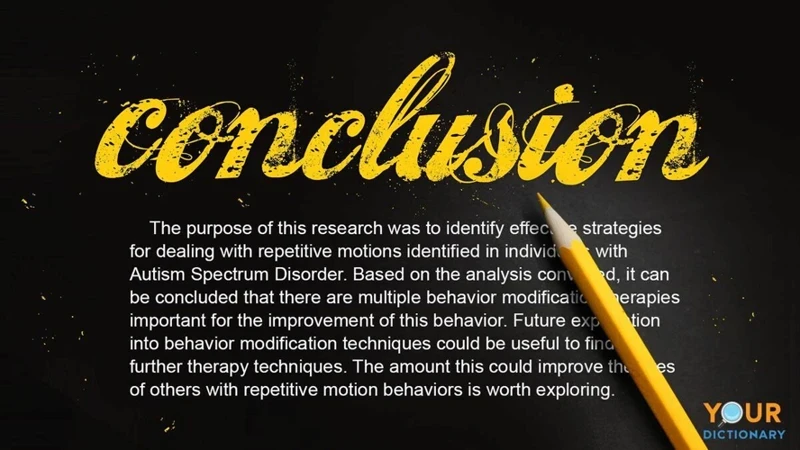
In conclusion, astrology can be a valuable tool for navigating and healing past traumas. By examining the birth chart and understanding the indicators of trauma, individuals can gain deeper insights into their experiences and begin the healing process. Planetary transits can also provide opportunities for growth and transformation. Seeking professional guidance, journaling, setting intentions, and engaging in therapeutic rituals can further support the healing journey. Self-care practices aligned with astrology, such as nurturing yourself based on your moon sign and embracing the power of crystal healing, can also contribute to healing and well-being. Remember, the journey towards healing is unique to each individual, and it requires patience, self-compassion, and a commitment to self-care. By harnessing the wisdom of astrology, individuals can find guidance, strength, and empowerment on their path to healing and wholeness. So, embrace the healing potential of astrology and unlock the transformative power of the stars.
References
Here are some references that you may find helpful for further exploration and understanding of trauma, astrology, and healing practices:
– “The Body Keeps the Score: Brain, Mind, and Body in the Healing of Trauma” by Bessel van der Kolk, M.D.
– “Healing Trauma: A Pioneering Program for Restoring the Wisdom of Your Body” by Peter A. Levine
– “Astrology for the Soul” by Jan Spiller
– “The Only Astrology Book You’ll Ever Need” by Joanna Martine Woolfolk
– “Crystal Muse: Everyday Rituals to Tune In to the Real You” by Heather Askinosie and Timmi Jandro
– “The Power of Now: A Guide to Spiritual Enlightenment” by Eckhart Tolle
These resources provide valuable insights into trauma, astrology, and various healing practices. Whether you’re looking to deepen your understanding of trauma or explore how astrology can support healing, these references offer guidance and knowledge to support your journey towards healing and self-discovery.
Frequently Asked Questions
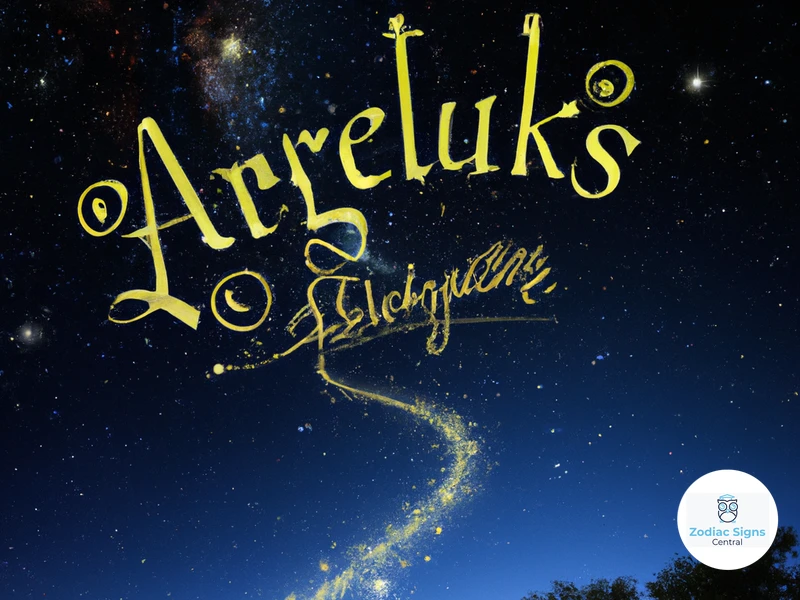
1. Can astrology really help with healing past traumas?
Astrology can be a valuable tool in the healing process of past traumas. It provides insights into the energetic imprints of the past and offers guidance on how to navigate and heal those wounds.
2. How can astrology identify trauma indicators in the birth chart?
Astrologers analyze the birth chart to identify specific planetary placements and aspects that may indicate potential trauma. These indicators can provide valuable information about the nature and impact of past traumas on an individual’s life.
3. What are planetary transits and how do they contribute to healing?
Planetary transits refer to the movement of planets through the zodiac. Certain transits can trigger healing opportunities and provide a catalyst for addressing past traumas, enabling individuals to work through and release emotional wounds.
4. Is it necessary to seek professional guidance when using astrology for healing trauma?
Seeking professional guidance from an experienced astrologer or therapist who specializes in trauma can enhance the healing journey. They can provide personalized insights and support during the process.
5. How can journaling and self-reflection assist in healing past traumas?
Journaling and self-reflection create a safe space for individuals to explore their emotions, thoughts, and memories related to past traumas. It helps bring awareness to the wounds and promotes emotional release and healing.
6. What is the role of setting intentions and affirmations in healing through astrology?
Setting intentions and affirmations aligned with the astrological energies assists in shifting subconscious patterns and beliefs related to past traumas. This conscious practice helps reprogram the mind and encourages self-empowerment and healing.
7. Can engaging in therapeutic rituals aid in the healing process?
Engaging in therapeutic rituals, such as creating sacred spaces, performing ceremonies, or engaging in energy-clearing practices, can create a supportive environment for healing. These rituals help release stagnant energy and invite healing energies into one’s life.
8. How can nurturing oneself based on the moon sign contribute to healing?
Each individual has a moon sign that represents their emotional needs. Nurturing oneself based on the moon sign can provide emotional support and help in restoring a sense of safety and security, which is crucial in the healing journey.
9. What is the significance of crystal healing in healing past traumas?
Crystal healing involves the use of specific crystals that resonate with healing energies. Crystals can assist in releasing energetic blockages, promoting emotional balance, and supporting the healing process by creating a harmonious environment.
10. How can exploring energy healing modalities aid in trauma healing?
Energy healing modalities, such as Reiki, acupuncture, or sound healing, work on subtle levels to clear energetic imbalances and promote healing. These practices can assist in releasing trauma from the energetic body and restoring overall well-being.
References
Frequently Asked Questions

1. Can astrology really help heal past traumas?
Astrology can be a powerful tool in healing past traumas by providing insights into the root causes of these traumas and offering guidance on how to navigate and heal them. It helps individuals gain a deeper understanding of themselves and their experiences.
2. How can astrology identify trauma indicators in a birth chart?
Astrology looks at the planetary positions and aspects in a birth chart to identify patterns that may indicate past traumas. For example, challenging aspects between Saturn and Mars can signify childhood experiences that may have been traumatic and left lasting effects on the individual.
3. What are planetary transits and how can they support healing?
Planetary transits refer to the movement of planets as they interact with our birth charts. These transits can trigger certain themes and emotions related to past traumas, providing an opportunity for healing and growth. Astrologers can guide individuals in understanding and working with these transits.
4. Is it necessary to seek professional guidance when using astrology for healing?
While astrology can be a helpful tool, it is beneficial to seek the guidance of a professional astrologer or therapist who specializes in trauma healing. They can provide deeper insights and personalized advice based on your specific birth chart and traumas.
5. How can journaling and self-reflection aid in the healing process?
Journaling allows individuals to explore their emotions, thoughts, and triggers related to past traumas. By reflecting on these experiences, individuals can gain clarity and develop a deeper understanding of themselves, which is crucial for healing and moving forward.
6. What role does setting intentions and affirmations play in astrological healing?
Setting intentions and affirmations aligned with healing and transformation can help individuals manifest positive changes and release past traumas. By consciously directing their energy and thoughts towards healing, individuals create a powerful synergy with astrological influences.
7. How can engaging in therapeutic rituals support the healing journey?
Therapeutic rituals provide individuals with a sense of empowerment and allow them to actively participate in their healing process. These rituals can be tailored to individual needs and preferences, helping to release stagnant energy and promote healing on emotional and energetic levels.
8. What is the relationship between self-care and healing past traumas with astrology?
Self-care is an essential component of the healing journey, especially when combined with astrology. By nurturing yourself based on your moon sign and embracing practices such as crystal healing and energy modalities, you create a supportive environment for healing and growth.
9. How can nurturing yourself based on your moon sign aid in trauma healing?
Each individual’s moon sign represents their emotional needs and how they nurture themselves. By understanding and honoring these needs, individuals can create a self-care routine that supports their healing journey and helps them process past traumas more effectively.
10. What is the significance of crystal healing in conjunction with astrology?
Crystals have unique energetic properties that can assist in healing and balancing specific emotions and energetic imbalances associated with past traumas. By incorporating crystals based on the guidance of astrological influences, individuals can amplify their healing process and promote overall well-being.
References
- Episode 39: From Trauma to Purpose — Astrology & the …
- The Astrology of Trauma and Healing | by Darinka Maja

